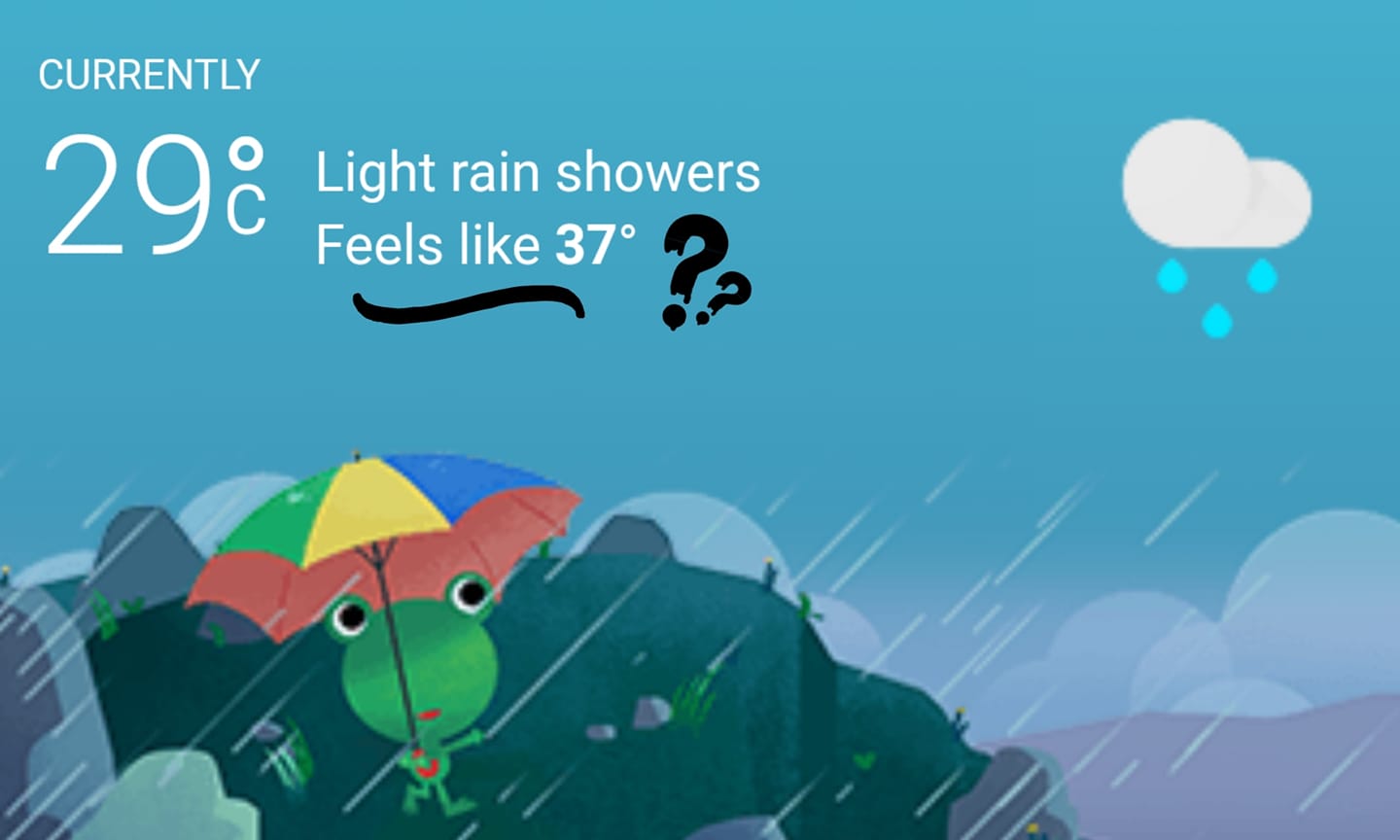Have you ever wondered what is that ‘“feels like” temperature, which is mentioned below the actual temperature in weather forecasts? Temperature is measured to be, say, 30 degrees celsius, but the real feel is 34 degrees. So, What does that mean? If the temperature is 30, it should feel like 30 right? Why is real feel different from the actual temperature?
Short Answer: Due to Humidity and wind speed
Let’s see how humidity and other factors impact the real feel against the actual temperature.
First, what “feels like” actually is?
The actual temperature of the air is what the thermometer measures, while, Feels like temperature is a measure of how hot it really feels for a human.
The “feels like” temperature differs from the actual temperature when humidity i.e water content in the atmosphere is very high or very low. Both conditions can be dangerous.
Consider this case:
It’s a sunny day, and as the air temperature increases, the body begins to sweat and most days sweat will evaporate. As the air is dry, moisture can easily evaporate leaving behind a cooling effect. That’s the body’s natural way of cooling down.
But when air is humid, sweat cannot evaporate easily. Very similar to how clothes dry up very fast in summer but NOT in monsoon because air is already holding a good amount of moisture. Due to slower evaporation, sweat persists on the skin. This leads to the body feeling hotter, hence the “feels like” temperature.
“That is why you get the sticky feeling, because the sweat isn’t able to evaporate as efficiently,” Pydynowski said.
This is the case where “feels like” temperature is higher than the actual temperature. Opposite is possible too. High winds can cause feels like temperature drop below the actual temperature. Here’s why
Just above our skin, there is a layer of hot air molecules, which makes us feel warm in winter. But high speed winds swipe that layer away, leaving our skin feeling cooler. It is also known as “wind chill”. Wind can cause sweat from our bodies to evaporate faster and can carry heat away from us quickly to make us feel colder.
“The stronger the wind, the faster the heat is getting removed from your body, so it will feel colder outside,” Pydynowski said.
Dew point is important too!
The dew point is the temperature at which air is saturated with water vapor, which is the gaseous state of water.
Thumb rule: Check the weather forecast, If the Dew Point is above 18 degrees, then definitely find a good air conditioning room. You’re gonna feel sticky and gross outside!
How is “feels like” Calculated?
HI = c1 + c2T + c3R + c4TR + c5T2 + c6R2 + c7T2R + c8TR2 + c9T2R2
where
HI = heat index (in degrees Fahrenheit)
T = ambient dry-bulb temperature (in degrees Fahrenheit)
R = relative humidity (percentage value between 0 and 100)
So the next time you check weather forecast, make sure to check “feels like” temperature. It can very much from the actual temperature. Tell me in comments section what do you check first in weather forecasts; temperature, feels like or humidity or what else? Also what’s the largest gap you have encountered between temperature and feels like?
